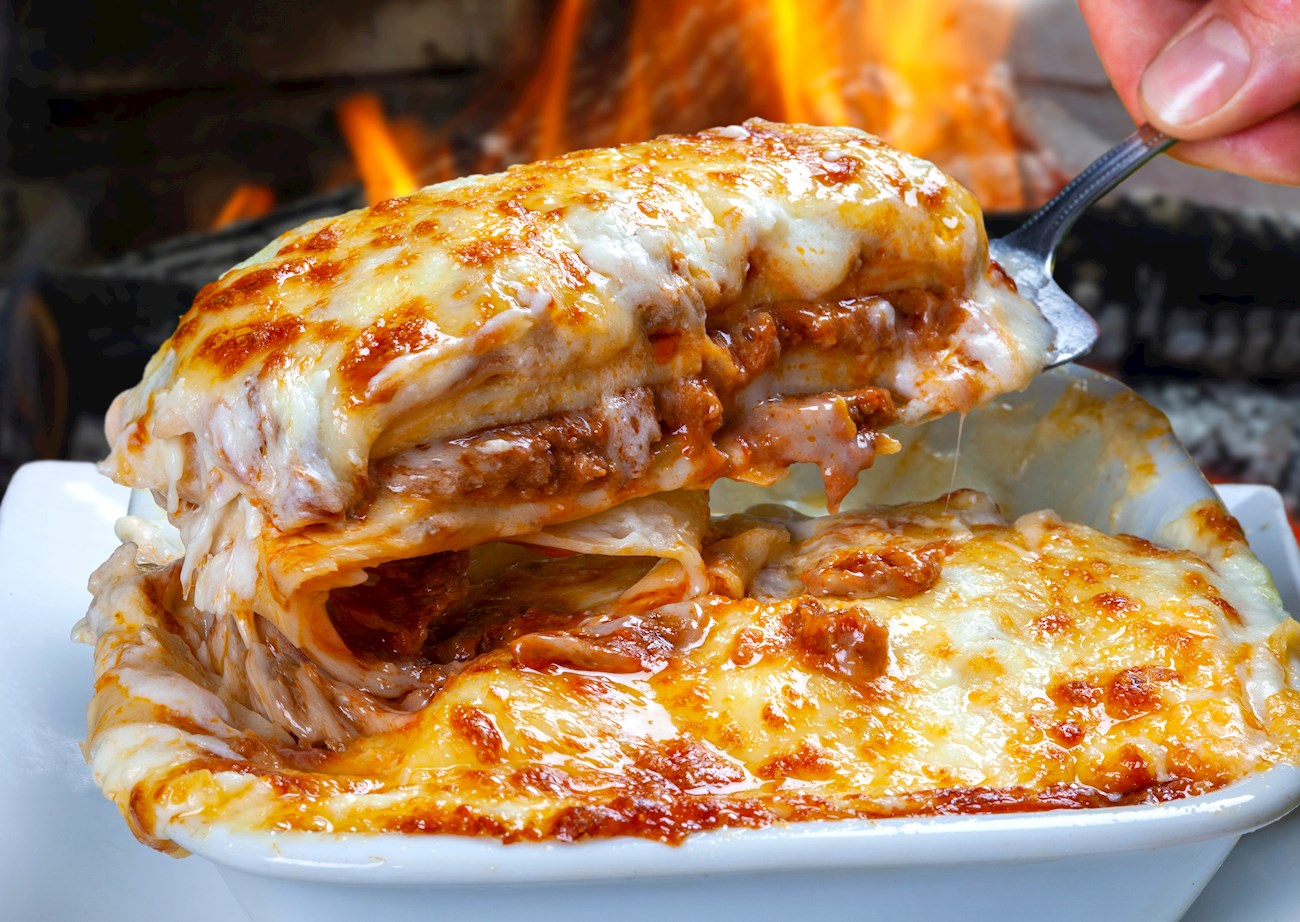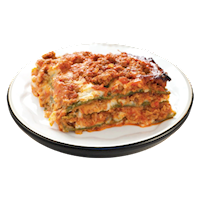Lasagne
(Lasagna)
Lasagna is a traditional pasta type that's used to make a variety of lasagna dishes consisting of thin pasta sheets that are interleaved with a mixture of savory ingredients and baked in the oven. This is probably one of the earliest forms of pasta, and some believe that its ancestor was the Greek laganon or lasanon.
The term lasagna was coined in Trento in the 16th century, and the dish was reserved for festive days. In the 1800s, baked (al forno) lasagne dishes started to emerge, especially in the south. The most famous lasagna dish is lasagne alla bolognese, and it can be found in most restaurants in Bologna.
Nowadays, there is a wide array of lasagna dishes, made with ingredients such as radicchio, mushrooms, spinach, artichokes, ricotta, asparagus, prosciutto, zucchini, eggplants, and even seafood such as shrimps and scallops.
Types of Lasagne
Pairing tips
Lagrein
Lagrein is an ancient Italian red grape mainly cultivated in Trentino-Alto Adige in Northeast Italy. The grape has ancient origins, and though it was once common,... Read more
Recipe variations
Italian Academy of Cuisine's Lasagne Verdi alla Bolognese
READY IN 3hThis recipe published by Accademia Italiana della Cucina is prepared with chicken liver, but contrary to the usual practice, no wine is added. Also, in this recipe, the basic fat for the ragù is butter, and not olive oil which is prevalently used in most recipes.
Academia Barilla's Lasagne Verdi alla Bolognese
READY IN 3hIn this version of the recipe, published by Academia Barilla, the first international center dedicated to the development and promotion of Italian gastronomic culture, the ingredients you can find in the ragù are dry red wine and the tomato concentrate. All other steps in preparing the lasagne alla Bolognese are more or less similar to the recipe above. This recipe suggests 2 liters of béchamel sauce.
Lasagne Authentic recipe
This recipe published by Accademia Italiana della Cucina is prepared with chicken liver, but contrary to the usual practice, no wine is added. Also, in this recipe, the basic fat for the ragù is butter, and not olive oil which is prevalently used in most recipes.

















